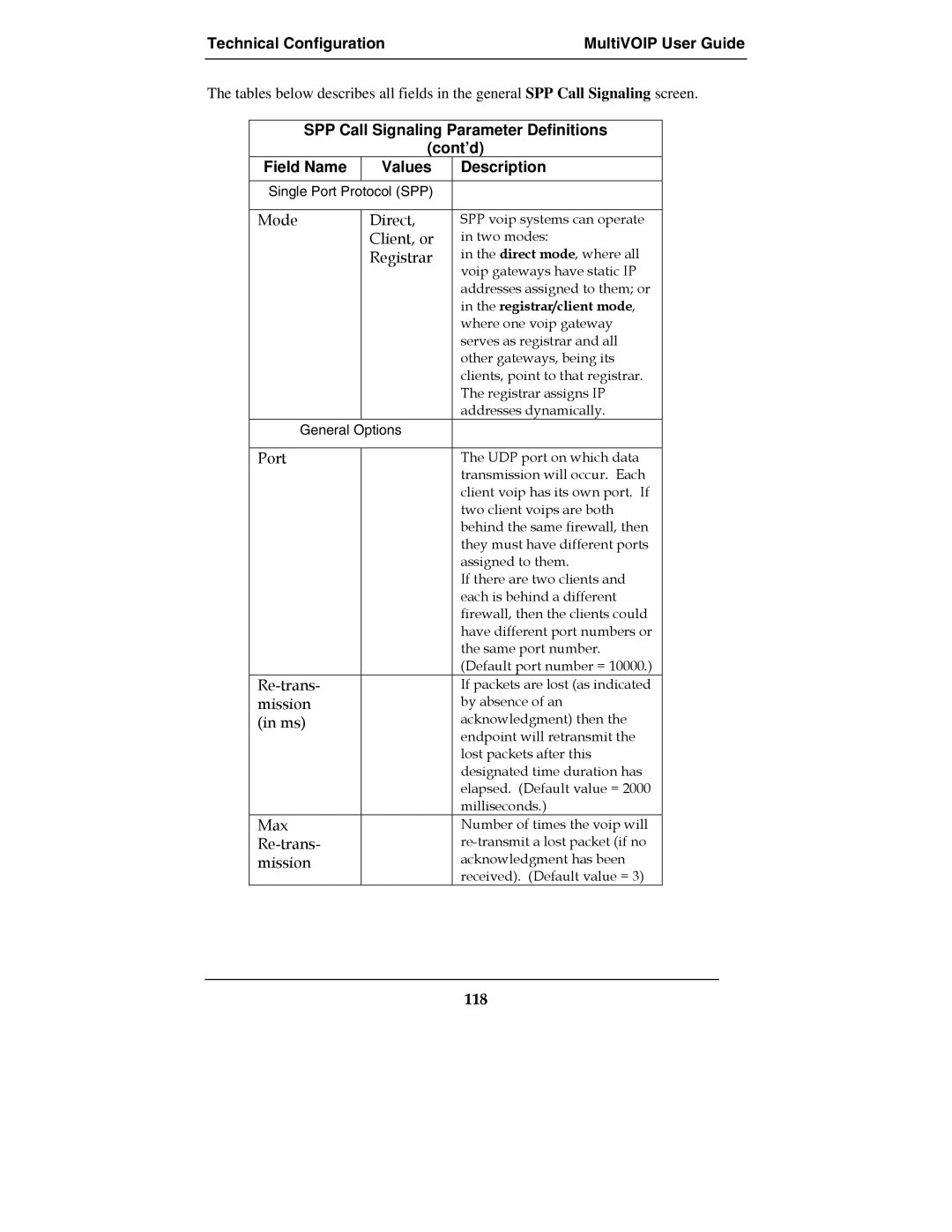
Technical ConfigurationMultiVOIP User Guide
The tables below describes all fields in the general SPP Call Signaling screen.
SPP Call Signaling Parameter Definitions
(cont’d)
Field Name | Values | Description |
Single Port Protocol (SPP) |
| |
|
|
|
Mode | Direct, | SPP voip systems can operate |
| Client, or | in two modes: |
| Registrar | in the direct mode, where all |
|
| voip gateways have static IP |
|
| addresses assigned to them; or |
|
| in the registrar/client mode, |
|
| where one voip gateway |
|
| serves as registrar and all |
|
| other gateways, being its |
|
| clients, point to that registrar. |
|
| The registrar assigns IP |
|
| addresses dynamically. |
General Options |
| |
|
|
|
Port |
| The UDP port on which data |
|
| transmission will occur. Each |
|
| client voip has its own port. If |
|
| two client voips are both |
|
| behind the same firewall, then |
|
| they must have different ports |
|
| assigned to them. |
|
| If there are two clients and |
|
| each is behind a different |
|
| firewall, then the clients could |
|
| have different port numbers or |
|
| the same port number. |
|
| (Default port number = 10000.) |
| If packets are lost (as indicated | |
mission |
| by absence of an |
(in ms) |
| acknowledgment) then the |
|
| endpoint will retransmit the |
|
| lost packets after this |
|
| designated time duration has |
|
| elapsed. (Default value = 2000 |
|
| milliseconds.) |
Max |
| Number of times the voip will |
| ||
mission |
| acknowledgment has been |
|
| received). (Default value = 3) |
